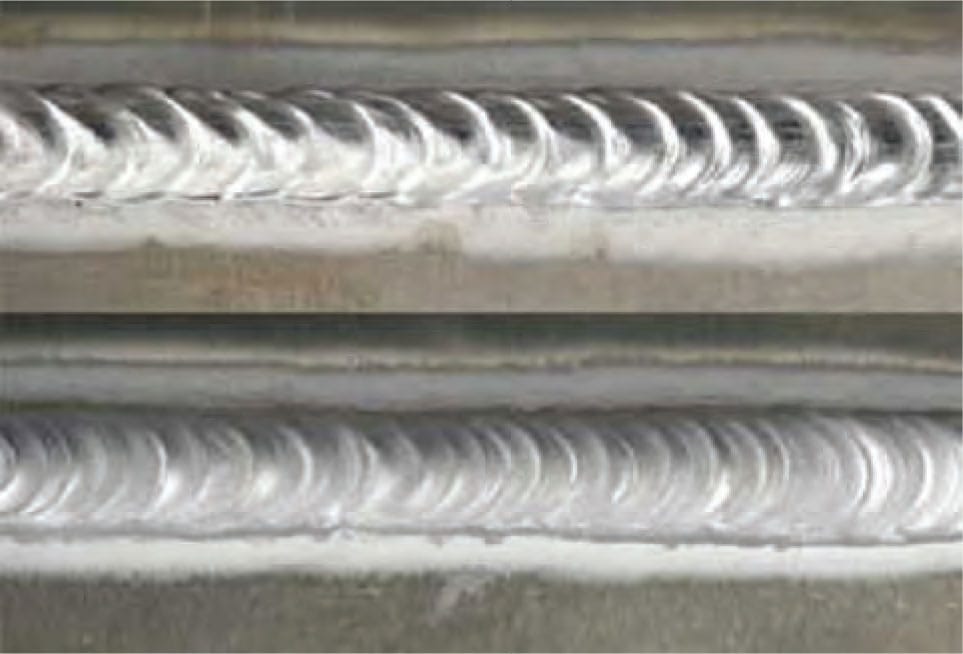Aluminum Welding Guide
Welding Procedures – Pulsed Spray Transfer MIG Welding Of Aluminum
Modern Pulsed MIG inverters have replaced conventional spray transfer MIG welders for many thin gauge aluminum applications, and they may also be a viable alternative in some conventional AC TIG applications. The pulsed MIG process makes this possible by providing more precise control of heat input, faster travel speeds, reduced potential for burn-through on thin gauge aluminum, and better control of the weld bead profile. Some of the new pulsed MIG programs have been designed to produce welds with cosmetic profiles that are almost identical to the characteristic TIG weld profiles (see figure below).
When considering a move to inverter pulsed MIG welding technology, evaluate these factors:
- The ability to control heat input. The pulses of peak current (which occur above the transition point) provide the good fusion associated with spray transfer, while the lower background current cools the weld puddle and allows it to freeze slightly to help prevent burn-through.
- The ability to control bead profile. Using a function called arc control, operators can adjust the width of the arc cone which lets them tailor the bead profile to the application. A wider bead can help tie-in both sides of a joint and a narrow bead helps provide good fusion at the root of a joint. A bead of the right size helps to eliminate excess heat input, over-welding, and post-weld grinding.
- Superior arc starts. A good pulsed MIG program for aluminum provides more energy at the start of the weld (which helps ensure good fusion) and then reduces energy to normal parameters for optimal welding characteristics.
- Superior arc stops. Today’s pulsed MIG equipment provides the technology to ramp down to a cooler welding parameter to fill in the crater at the end of a weld. This helps to eliminate termination cracking which can be a serious issue when welding aluminum.
- The ability to use a larger diameter wire to weld thin gauge material. This can increase the deposition rate and aid feeding by using a stiffer wire, and can also save money on filler wire. The difference in cost between a 0.030” wire and a 0.047” wire, for instance, can be considerable.



